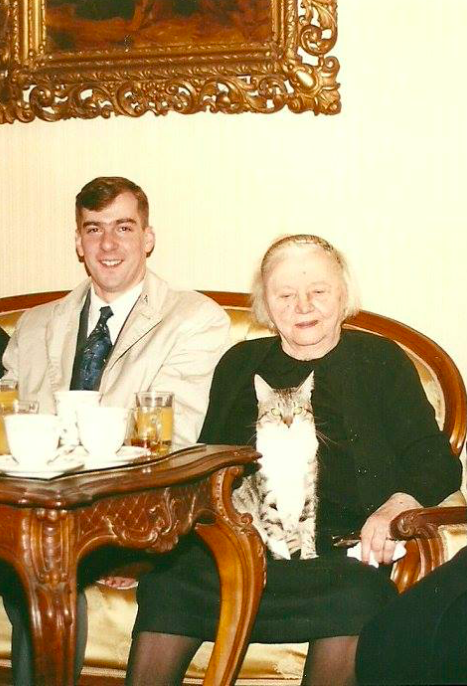The life of Marie-Thérèse Charlotte, the little-known daughter-in-law of Napoleon Bonaparte, is a fascinating tale of intrigue and drama. Born into the royal family of France, she was destined for greatness, yet her story remains overshadowed by the more prominent figures of her time. As we delve into the intricacies of her life, we find a complex web of politics, family dynamics, and personal struggles that shaped her experiences. This article aims to shed light on the often-overlooked story of Marie-Thérèse Charlotte, a woman whose life was deeply intertwined with the tumultuous history of Europe during the early 19th century.
Opening Paragraph 2Marie-Thérèse Charlotte's life began with the promise of royal connections, but her marriage to Napoleon's son, Napoleon II, brought her into the midst of the Napoleonic Wars. As the wife of the future Emperor, she was expected to embody the imperial ideals, but her own desires and ambitions often conflicted with the expectations placed upon her. This dichotomy between her personal aspirations and the demands of her role will be explored in this article, providing a nuanced understanding of the challenges faced by Marie-Thérèse Charlotte in her tumultuous life.
who was the little-known daughter-in-law of Napoleon Bonaparte

what was Elizabeth Patterson's life like after she was separated from Jérôme Bonaparte

what were Elizabeth Patterson's main activities in her later years
 |
| Former Crown Prince George of Serbia and his wife Radmila. |
 |
| Radmila Radonjić. |
Radmila was widowed when Prince George of Serbia died at Belgrade on 17 October 1972. The prince, aged eighty-four, had been ill with an heart ailment for some period. His passing was briefly noted in the Yugoslavian press by the national news agency Tanjug (Танјуг): "Đorđe Karađorđević, born in 1887, was the first Serbian heir to the throne up to 1909, when he renounced all rights of succession. He was a brave fighter in the Balkan wars and in the First World War." In his old age, Belgrade residents remembered that Prince George was a frequent visit to Hunter's Café near the British embassy. The prince would dress in an old suite and a Basque beret, sitting for hours while drinking either brandy or Turkish coffee and chatting with friends. Prince George outlived all of his siblings: his sister Princess Jelena, who married Prince Ioann Konstantinovich of Russia, died in 1962; and his brother King Alexander I of Yugoslavia, who married Princess Marie of Romania, was assassinated in 1934. George of Serbia was buried at the Royal Mausoleum at Saint George's Church in Oplenac.
 |
| Prince Karl Vladimir of Yugoslavia and Radmila Radonjić in the 1990s. |
 |
| Radmila's grave at Oplenac. |
As we conclude our exploration of the fascinating life of Marie-Thérèse Charlotte, the little-known daughter-in-law of Napoleon Bonaparte, we are reminded of the complexities and challenges that she faced in her tumultuous life. Despite being born into the royal family of France, her experiences were marked by the tumultuous history of Europe during the early 19th century. Her marriage to Napoleon's son, Napoleon II, brought her into the midst of the Napoleonic Wars, and her own desires and ambitions often conflicted with the expectations placed upon her. Through her story, we gain a deeper understanding of the intricate web of politics, family dynamics, and personal struggles that shaped her life, and we are left with a profound appreciation for the resilience and determination of this remarkable woman. As we reflect on her life, we are reminded that even in the most trying of circumstances, it is the human spirit that ultimately prevails, and that the legacy of Marie-Thérèse Charlotte serves as a testament to the enduring power of love, family, and perseverance.
In conclusion, Marie-Thérèse Charlotte's life is a powerful reminder of the enduring impact of historical events on individual lives. Her story, though often overshadowed by the more prominent figures of her time, offers a unique perspective on the tumultuous history of Europe during the early 19th century. Through her experiences, we gain a deeper understanding of the complexities of family dynamics, the challenges of navigating the intricacies of politics, and the enduring power of love and resilience. As we close this chapter on her life, we are left with a profound appreciation for the remarkable woman who was Marie-Thérèse Charlotte, the little-known daughter-in-law of Napoleon Bonaparte. Her legacy serves as a testament to the enduring power of love, family, and perseverance, and her story will continue to captivate and inspire us for generations to come.
what were the key challenges Marie-Thérèse faced during her imprisonment
- Isolation and Loneliness: She was confined to a small, isolated space with no contact with the outside world, which led to feelings of loneliness and despair.
- Physical and Emotional Suffering: The conditions in the Temple tower were harsh, with inadequate food, poor sanitation, and limited access to medical care. This physical suffering was compounded by the emotional toll of being separated from her family and the uncertainty of her fate.
- Fear of Execution: Marie-Thérèse was aware of the brutal nature of the French Revolution and the fate that awaited those who were deemed enemies of the state. She lived in constant fear of being executed, which added to her emotional distress.
- Loss of Family and Identity: Her imprisonment meant she was separated from her family and her royal heritage. This loss of identity and connection to her past further exacerbated her emotional pain.
- Psychological Impact: The prolonged isolation and uncertainty of her situation took a significant toll on Marie-Thérèse's mental health. She became increasingly paranoid and isolated, which further complicated her situation.


No comments:
Post a Comment